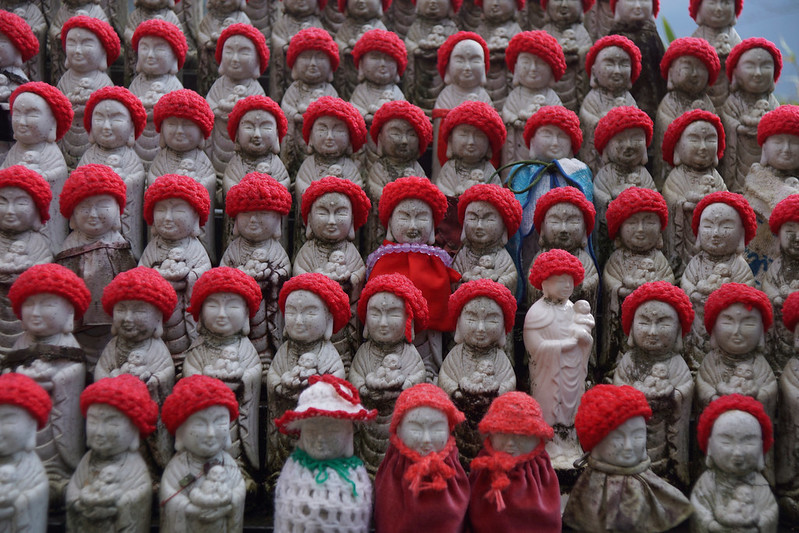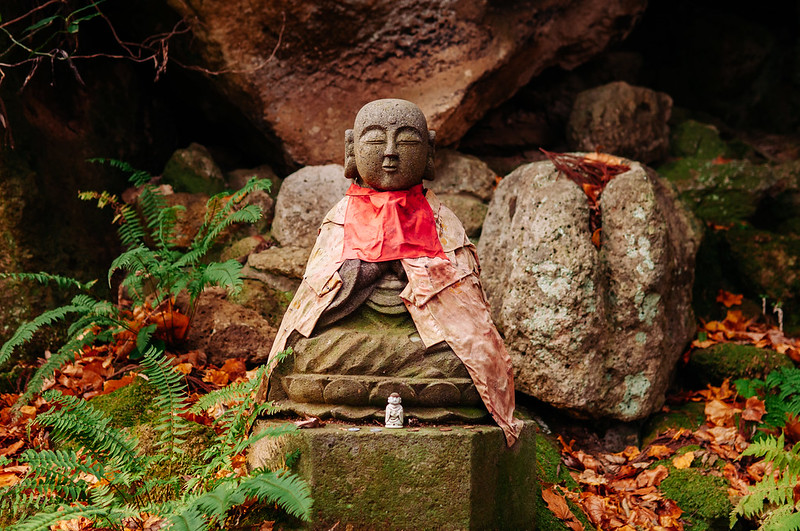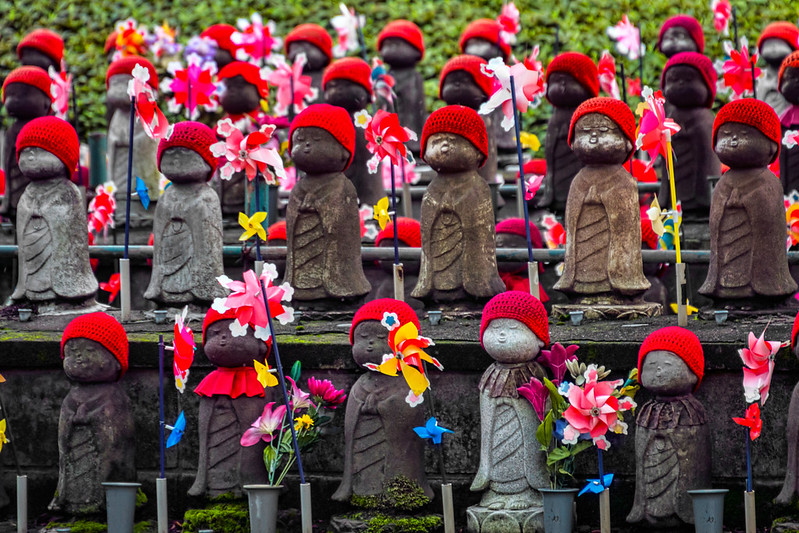
The Story of Jizo Bosatsu (Ksitigarbha Bodhisattva)
Ksitigarbha Bodhisattva (Jizō Bosatsu, 地蔵菩薩) is an enlightened being revered primarily in East Asian Buddhism. He is mostly depicted as a Buddhist monk. The name means Earth Stone, Earth Treasury, Earth Womb, or Earth Matrix. Ksitigarbha Bodhisattva vowed to teach all beings of the six worlds between the passing of Gautama (Sakyamuni) Buddha and the rising of Maitreya Buddha. He also vowed not to achieve Buddhahood until all trapped in hell are freed. He is known as the bodhisattva of the earth and he is believed to be the bodhisattva of all those trapped in hell, the guardian of the souls of children who have died, aborted foetuses, travelers, and children in general.
A bodhisattva’s earthly deeds, needed to achieve enlightenment, are known as a bodhimanda. It is often a site of pilgrimage where temples and monasteries are built. Many Japanese Buddhist temples have several rows and numerous stone statues dressed with children’s bonnets, bibs, and the like. Most clothing is in red, the color that wards off evil spirits and cures illnesses.
People who are not aware of the actual reason why the statues are clothed may think it’s cute, but in actuality, it has a deeper and sadder meaning.
The statues represent protected children but the clothing is often given by grieving parents who have lost their children. In some cases, parents make an offering to thank Ksitigarbha Bodhisattva for saving their child from a life-threatening illness. The greatest compassionate vow of Ksitigarbha Bodhisattva is “If I do not go to the hell to help the suffering beings there, who else will go? . . . if the hells are not empty I will not become a Buddha. Only when all living beings have been saved, will I attain Bodhi.”


